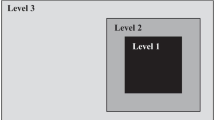Abstract
The EyeDee™ embedded eye tracking solution developed by SuriCog is the world’s first innovative solution using the eye as a real-time mobile digital cursor, while maintaining full mobility. The system consists in a wearable device capturing images on the human’s eye and sending these images over a transmission medium (wire/wireless transmission). One important request of this system is the real-time transmission of the captured images, along with low-power, low-heat, low-MIPS requirements. This work is concentrated around an improvement of the ROI (Region of Interest – region containing image of the human’s pupil) image compression performance achieved via extra information removal. The feature based compression lies on ROI image blocks classification, implemented using a neural network.
Access this chapter
Tax calculation will be finalised at checkout
Purchases are for personal use only
Similar content being viewed by others
References
Morozkin, P., Swynghedauw, M., Trocan, M.: Neural network based eye tracking. In: Nguyen, N.T., Papadopoulos, G.A., Jędrzejowicz, P., Trawiński, B., Vossen, G. (eds.) ICCCI 2017. LNCS (LNAI), vol. 10449, pp. 600–609. Springer, Cham (2017). https://doi.org/10.1007/978-3-319-67077-5_58
Holmqvist, K., Nyström, M., Andersson, R., Dewhurst, R., Jarodzka, H., Van de Weijer, J.: Eye Tracking: A Comprehensive Guide to Methods and Measures. OUP Oxford, Oxford (2011)
Bergstra, J.S., Bardenet, R., Bengio, Y., Kégl, B.: Algorithms for hyper-parameter optimization. In: Advances in Neural Information Processing Systems, pp. 2546–2554 (2011)
Bergstra, J., Bengio, Y.: Random search for hyper-parameter optimization. J. Mach. Learn. Res. 13(Feb), 281–305 (2012)
Snoek, J., Larochelle, H., Adams, R.P.: Practical Bayesian optimization of machine learning algorithms. In: Advances in Neural Information Processing Systems, pp. 2951–2959 (2012)
Lienhart, R., Maydt, J.: An extended set of haar-like features for rapid object detection. In: IEEE ICIP 2002, vol. 1, pp. 900–903 (2002)
Messom, C., Barczak, A.: Fast and efficient rotated haar-like features using rotated integral images. In: Australian Conference on Robotics and Automation, pp. 1–6 (2006)
Pavani, S.-K., Delgado, D., Frangi, A.: Haar-like features with optimally weighted rectangles for rapid object detection. Pattern Recogn. 43(1), 160–172 (2010)
Barczak, A.L.C., Johnson, M.J., Messom, C.H.: Real-time computation of haar-like features at generic angles for detection algorithms. Res. Lett. Inf. Math. Sci. 9, 98–111 (2006)
Viola, P.A., Jones, M.J.: Rapid object detection using a boosted cascade of simple features. In: Computer Vision and Pattern Recognition, no. 1, pp. 511–518 (2001)
Demuth, H.B., Beale, M.H., De Jess, O., Hagan, M.T.: Neural network design. Martin Hagan (2014)
Torch framework. www.torch.ch. Accessed 9 Oct 2017
Vogl, T.P., Mangis, J.K., Rigler, A.K., Zink, W.T., Alkon, D.L.: Accelerating the convergence of the back-propagation method. Biol. Cybern. 59(4), 257–263 (1988)
Mason, L., Baxter, J., Bartlett, P.L., Frean, M.R.: Boosting algorithms as gradient descent. In: NIPS, pp. 512–518 (1999)
ISO/IEC 15444-1:2004 | ITU-T Rec. T.800
Morozkin, P., Swynghedauw, M., Trocan, M.: Image quality impact for eye tracking systems accuracy. In: 2016 IEEE International Conference on Electronics, Circuits and Systems (ICECS), pp. 429–431 (2016)
Author information
Authors and Affiliations
Corresponding author
Editor information
Editors and Affiliations
Rights and permissions
Copyright information
© 2018 Springer International Publishing AG, part of Springer Nature
About this paper
Cite this paper
Morozkin, P., Swynghedauw, M., Trocan, M. (2018). Feature-Based Image Compression. In: Nguyen, N., Hoang, D., Hong, TP., Pham, H., Trawiński, B. (eds) Intelligent Information and Database Systems. ACIIDS 2018. Lecture Notes in Computer Science(), vol 10751. Springer, Cham. https://doi.org/10.1007/978-3-319-75417-8_43
Download citation
DOI: https://doi.org/10.1007/978-3-319-75417-8_43
Published:
Publisher Name: Springer, Cham
Print ISBN: 978-3-319-75416-1
Online ISBN: 978-3-319-75417-8
eBook Packages: Computer ScienceComputer Science (R0)




